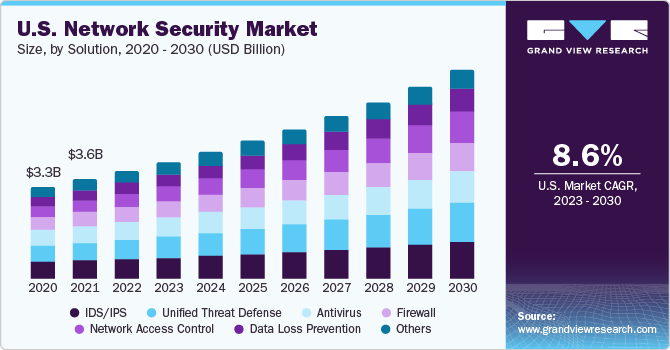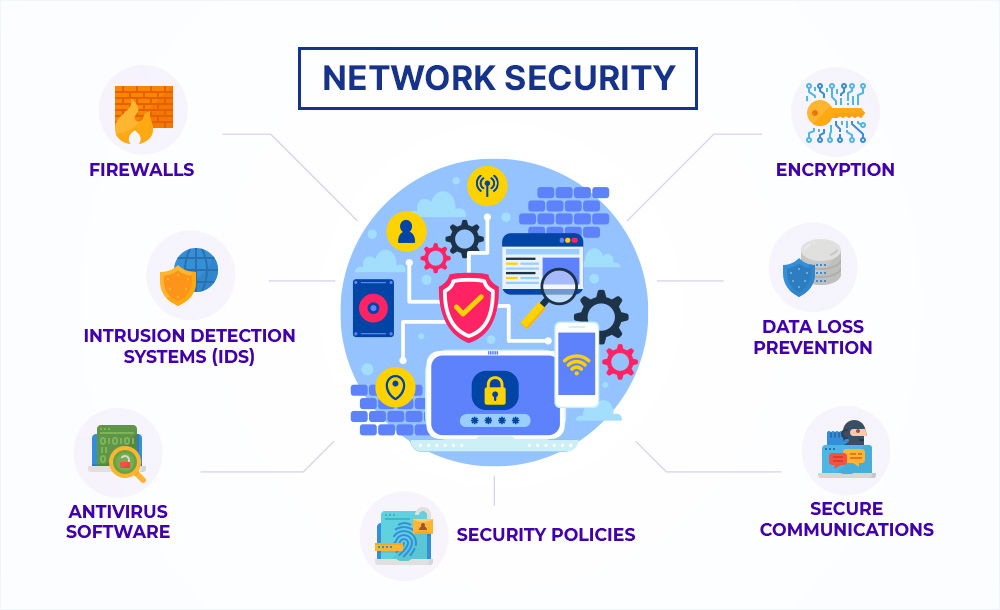Data and Network Security: Key Strategies to Safeguard Your Digital Infrastructure
Data and Network Security: Key Strategies to Safeguard Your Digital Infrastructure
Blog Article
The Critical Role of Information and Network Security in Shielding Your Details
In a period where information breaches and cyber risks are progressively widespread, the significance of robust data and network safety can not be overemphasized. The implementation of efficient safety procedures, such as file encryption and gain access to controls, is critical to maintaining depend on and operational honesty.
Comprehending Data Safety And Security
In today's electronic landscape, an overwhelming majority of organizations come to grips with the intricacies of information security. This vital element of infotech includes shielding sensitive data from unapproved access, corruption, or burglary throughout its lifecycle. Data safety includes various strategies and modern technologies, consisting of security, access controls, and data masking, all targeted at guarding information against breaches and susceptabilities.
A basic element of data security is the recognition and classification of data based upon its sensitivity and value. This category assists organizations prioritize their safety initiatives, allocating resources to protect one of the most essential information successfully. Moreover, carrying out robust plans and procedures is important to make certain that employees comprehend their duty in keeping information safety and security.
Routine audits and analyses aid in identifying possible weaknesses within a company's data protection framework. Furthermore, staff member training is crucial, as human error remains a considerable aspect in data breaches. By fostering a society of safety awareness, organizations can reduce risks related to insider risks and carelessness.
Value of Network Protection
Network safety stands as a keystone of an organization's total cybersecurity strategy, with around 90% of organizations experiencing some kind of cyber hazard over the last few years. The value of network security lies in its capacity to shield sensitive details and keep the stability of business operations. By protecting network facilities, companies can protect against unauthorized access, information breaches, and various other harmful tasks that might jeopardize their assets and track record.
Implementing robust network safety determines not only aids in mitigating dangers however likewise fosters trust among stakeholders and clients. When customers are assured that their personal and financial information is secure, they are most likely to involve with the company, causing boosted customer commitment and service growth.
Moreover, a well-structured network safety and security framework facilitates compliance with numerous governing requirements. Organizations should stick to market criteria and legal requireds worrying data protection, and reliable network protection methods can make certain compliance, therefore preventing prospective penalties.

Typical Cyber Threats
Organizations need to remain cautious against a variety of cyber threats that can threaten their network security efforts. Among one of the most usual hazards is malware, which includes viruses, worms, and ransomware that can interrupt procedures, steal information, or hold info hostage. Phishing strikes, where malicious actors pose trusted entities to deceive individuals into revealing delicate information, proceed to expand in refinement, making customer education important.
An additional widespread hazard is dispersed denial-of-service (DDoS) attacks, which overload systems with traffic, rendering them unavailable to reputable customers. Expert dangers, whether unintended or intentional, pose considerable risks as staff members may unintentionally expose sensitive data or intentionally manipulate their gain access to for malicious objectives.
Furthermore, vulnerabilities in software and hardware can be manipulated by cybercriminals, highlighting the significance of normal updates and spot administration. Social engineering strategies even more complicate the landscape, as assaulters manipulate individuals right into disclosing secret information via psychological control.
As these hazards advance, companies have to maintain a proactive method to identify, alleviate, and react successfully to the ever-changing cyber danger landscape, securing their important info and preserving count on with stakeholders. fft pipeline protection.
Ideal Practices for Defense
Implementing robust security procedures is vital for guarding sensitive information and preserving operational stability. Organizations must start by performing comprehensive danger analyses to recognize vulnerabilities within their systems. This proactive approach enables the prioritization of security campaigns tailored to the particular demands of the organization.
Taking on strong password policies is vital; passwords ought to be complex, routinely changed, and handled using safe and secure password read review management devices. Multi-factor authentication (MFA) includes an added layer of safety by needing additional verification approaches, hence lowering the risk of unauthorized gain access to.
Regular software program updates and patch administration are critical to secure versus understood vulnerabilities. Carrying out firewall programs and invasion detection systems can even more shield networks from exterior dangers. Worker training is just as vital; personnel should be informed on acknowledging phishing efforts and comprehending the importance of data protection protocols.
Data file encryption should be utilized for delicate details, both at remainder and en route, to make sure that even if information is intercepted, it continues to be unattainable (fft pipeline protection). Organizations must create and regularly test case reaction plans to ensure speedy activity in the occasion of a safety violation. By adhering to these finest methods, companies can enhance their protection pose and safeguard their vital data possessions
Future Trends in Protection
The landscape of information and network safety and security is continuously evolving, driven by improvements in modern technology and the increasing refinement of cyber hazards. As organizations increasingly take on cloud computing and IoT tools, the standard of safety and security will shift toward a zero-trust design. This approach emphasizes that no entity-- outside or inner-- is inherently trusted, mandating verification at every accessibility factor.
In addition, making use of man-made intelligence and artificial intelligence in safety and security procedures is on the rise. These modern technologies make it possible for predictive analytics, permitting organizations to identify vulnerabilities and potential threats prior to they can be made use of. More Info Automation will likely play a critical role in improving security responses, lowering the time taken to alleviate violations.
In addition, governing structures will continue to tighten, requiring much more rigorous compliance steps. Organizations needs to stay abreast visit this site of developing policies to ensure they meet protection criteria.

Conclusion
Finally, the importance of data and network safety and security can not be overemphasized in the modern digital landscape. With the occurrence of cyber risks and the raising complexity of governing needs, organizations have to adopt detailed safety and security steps to protect delicate details. By applying effective methods and staying notified concerning arising fads, businesses can enhance their resilience versus potential assaults, guaranteeing information integrity and cultivating count on amongst stakeholders and clients. Prioritizing security continues to be vital for functional connection and lasting success.
In an era where data breaches and cyber dangers are significantly prevalent, the significance of robust data and network safety and security can not be overstated. Data protection includes various strategies and modern technologies, including security, access controls, and information masking, all aimed at safeguarding information versus breaches and vulnerabilities.
A basic element of information security is the identification and category of data based on its sensitivity and relevance.The landscape of information and network protection is continuously developing, driven by innovations in innovation and the enhancing sophistication of cyber hazards.In verdict, the relevance of data and network safety and security can not be overstated in the contemporary digital landscape.
Report this page